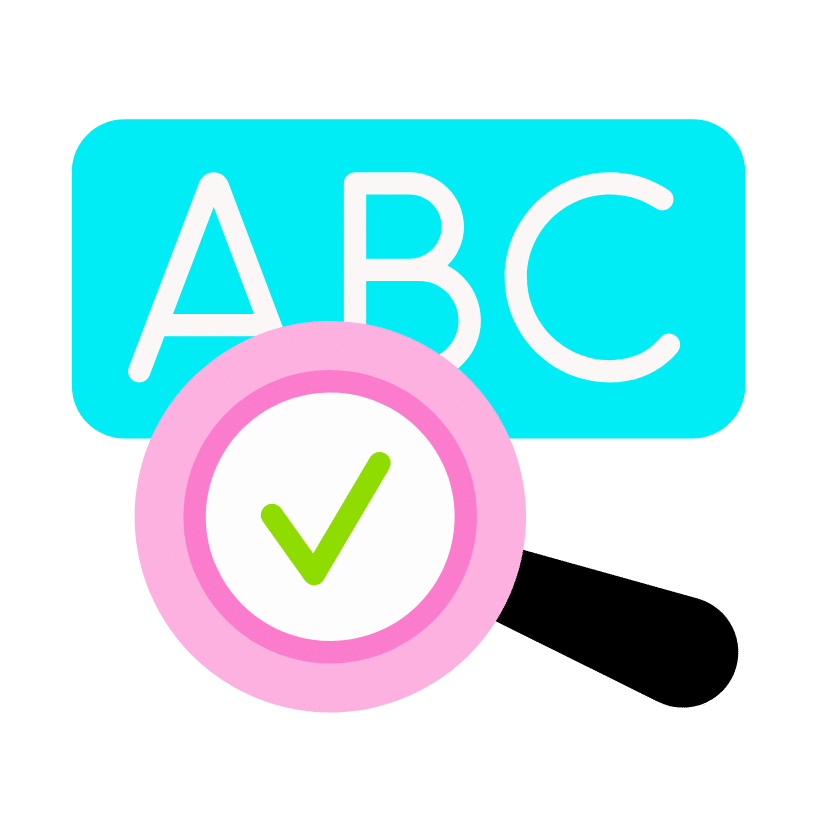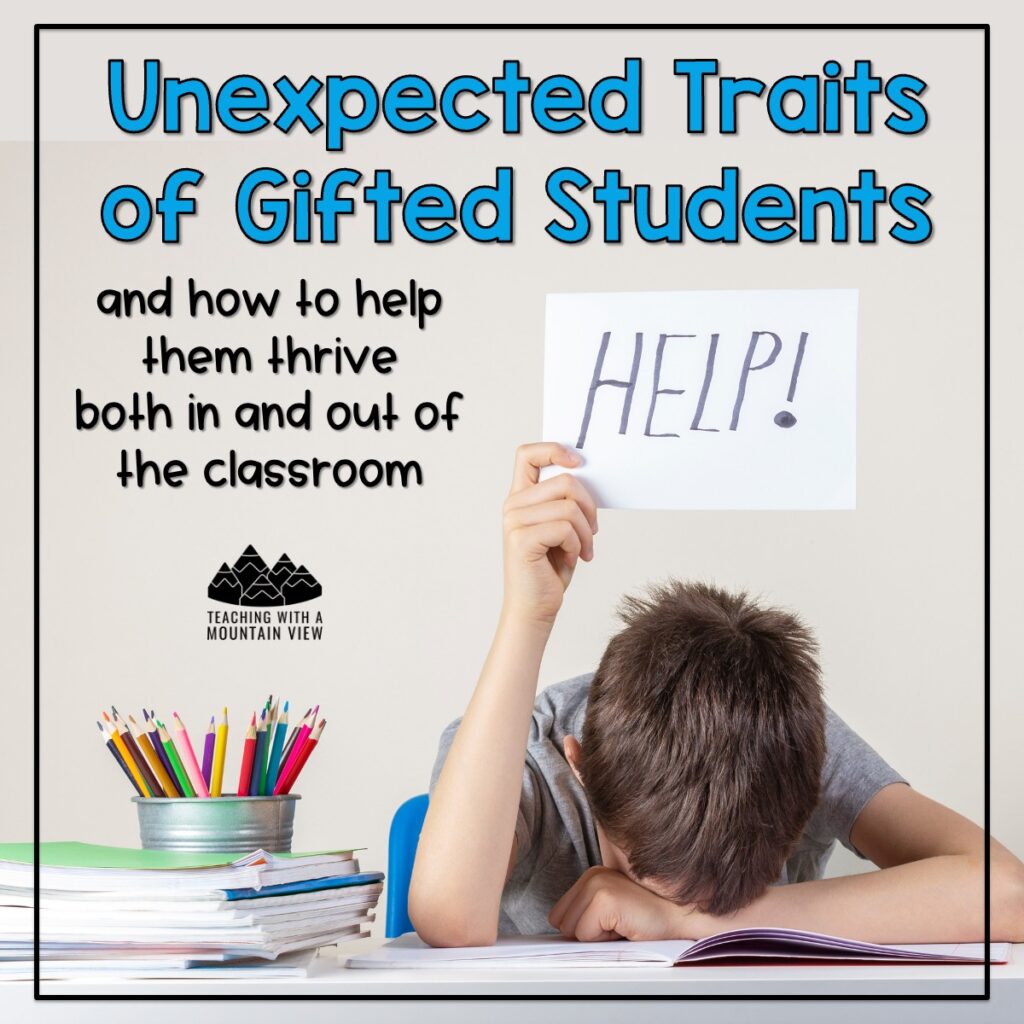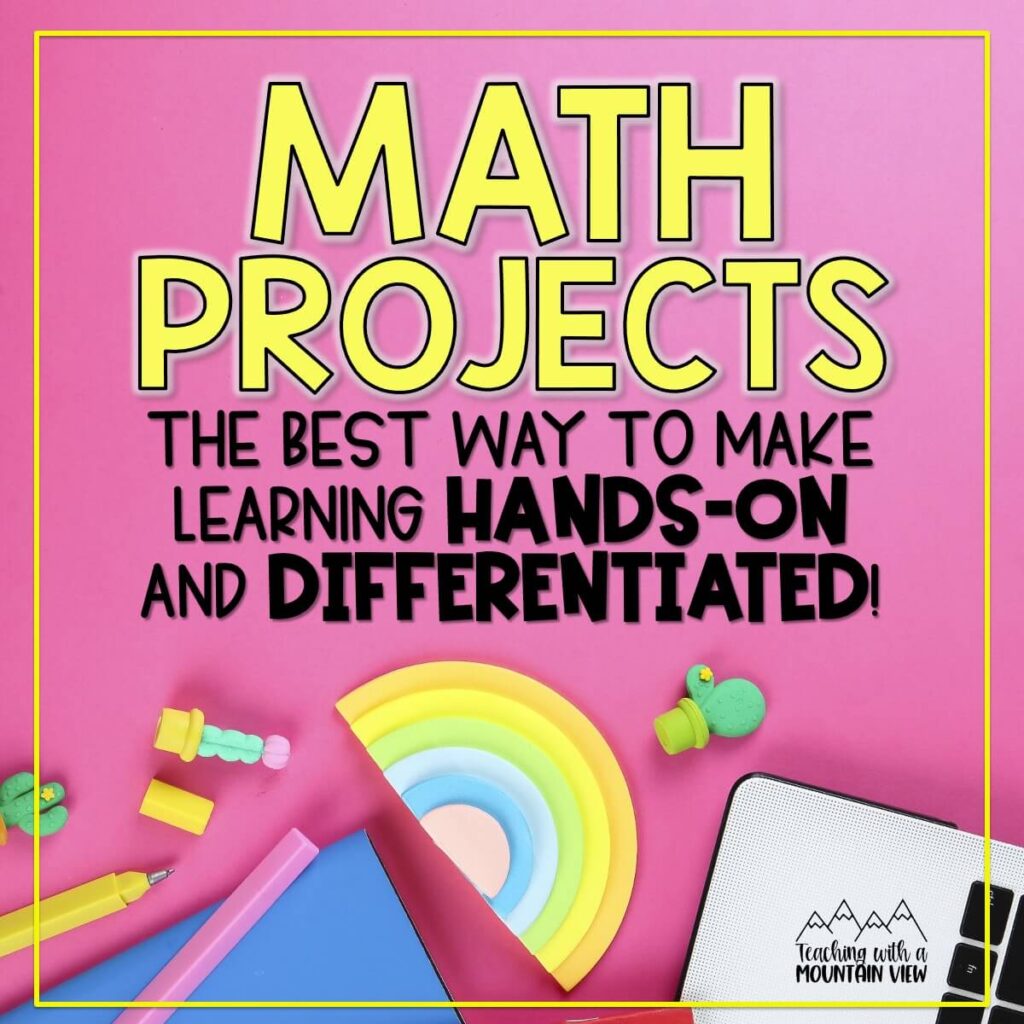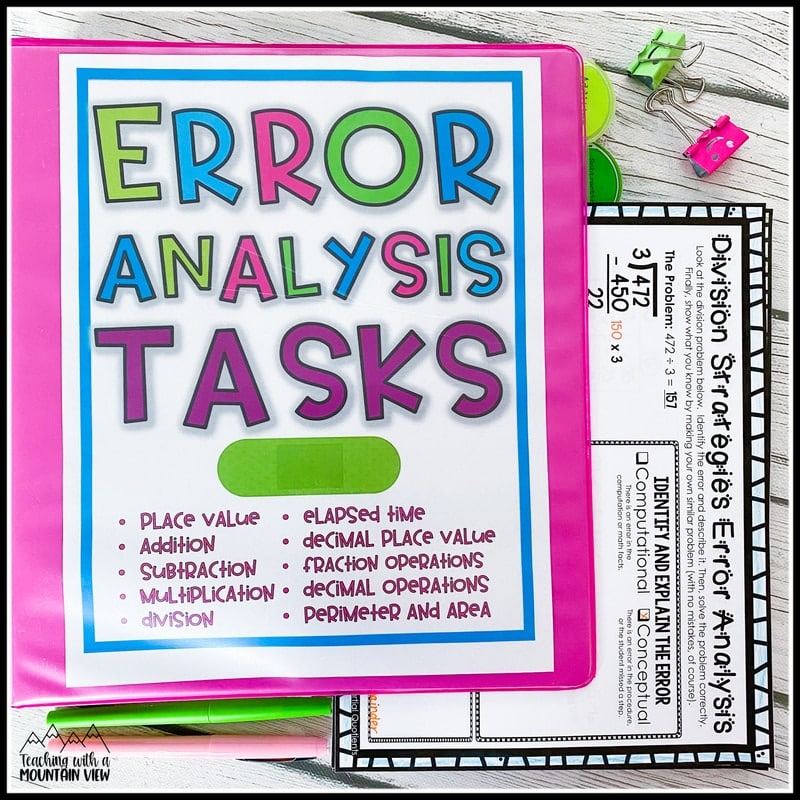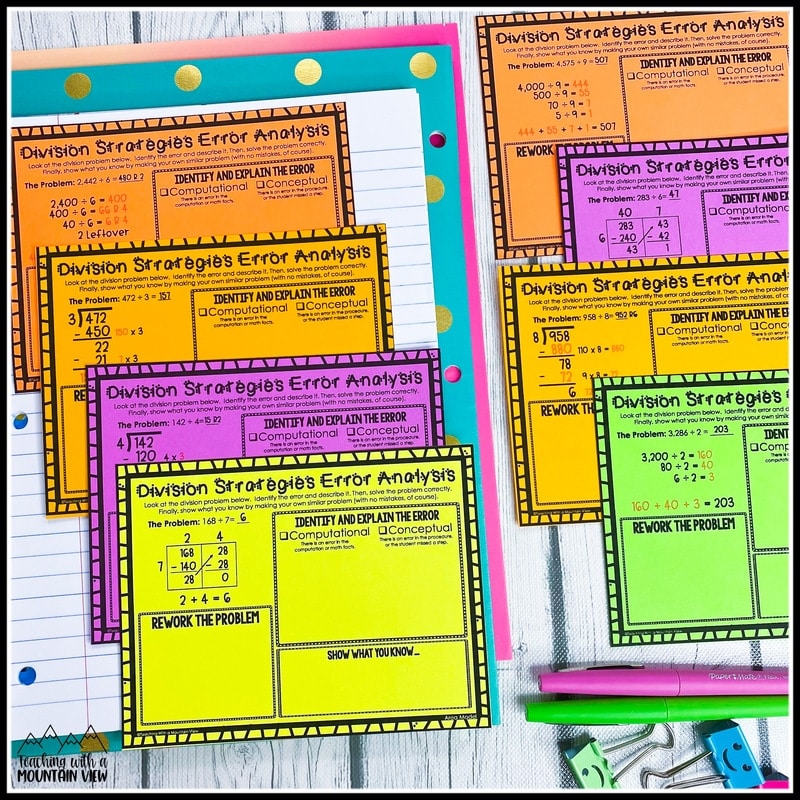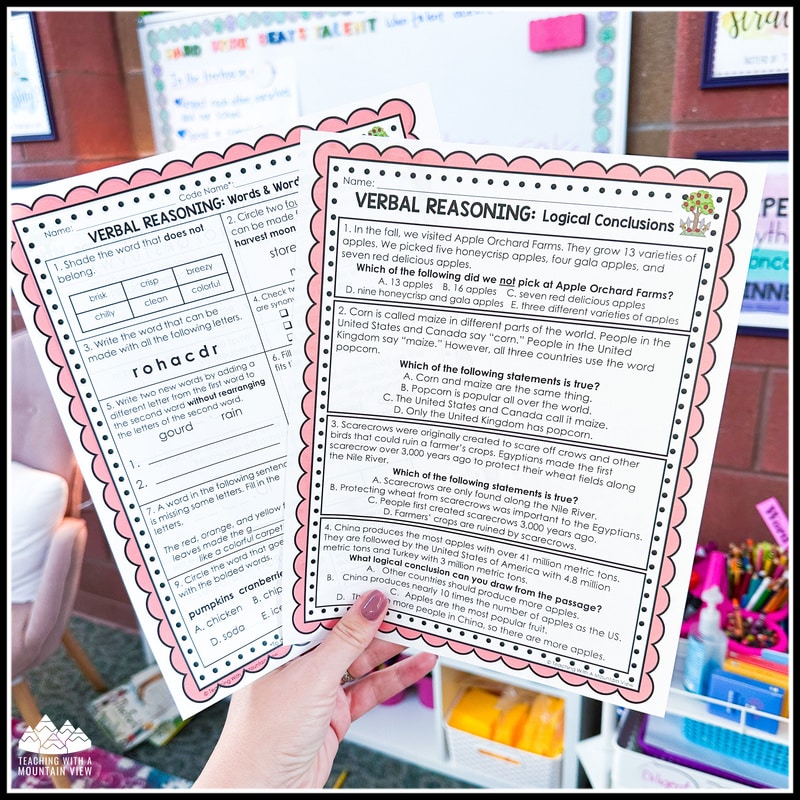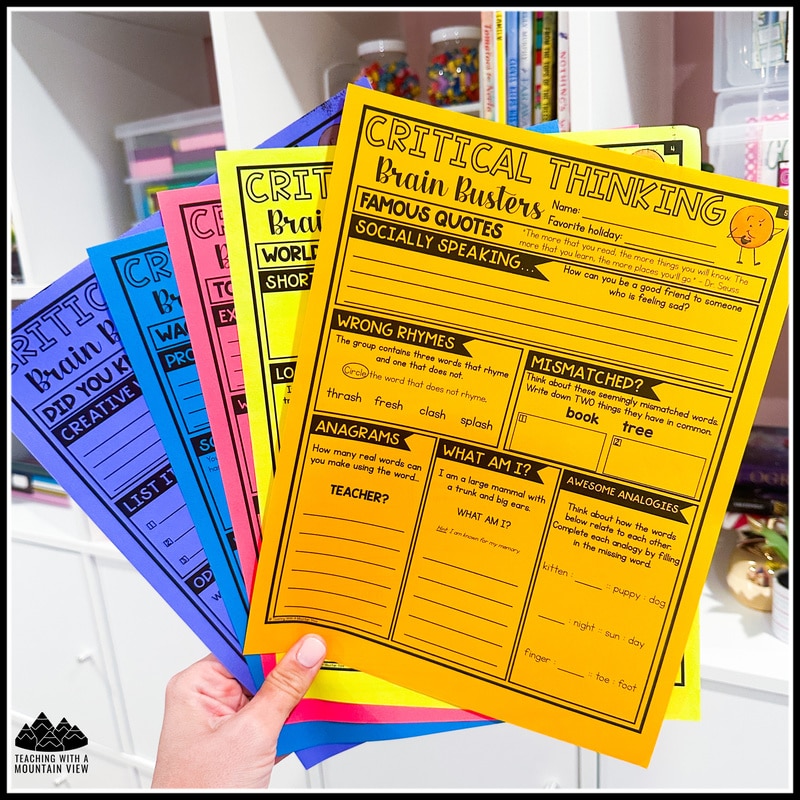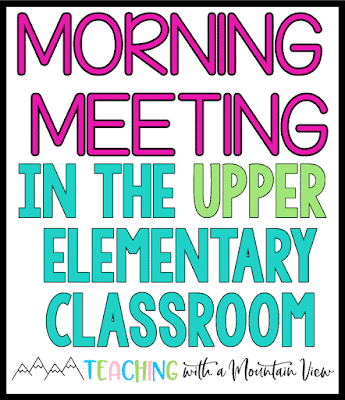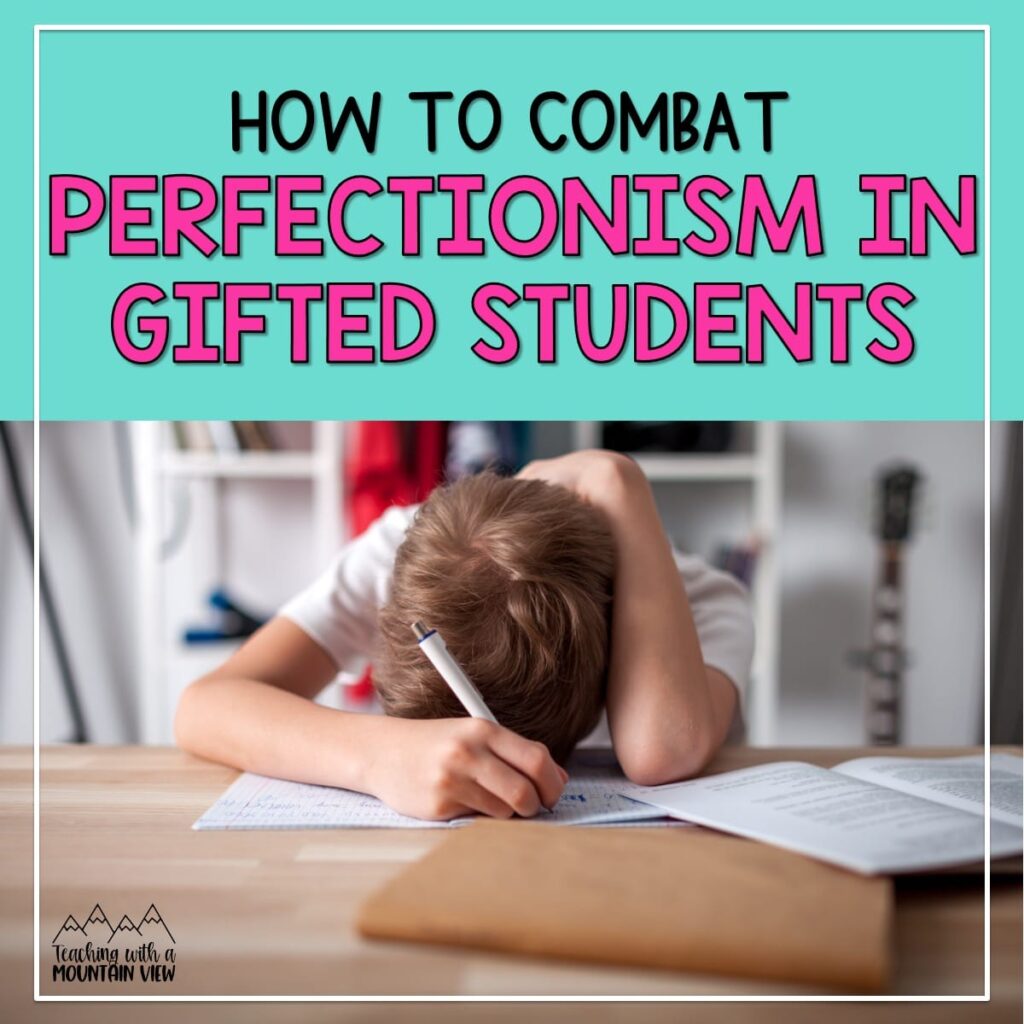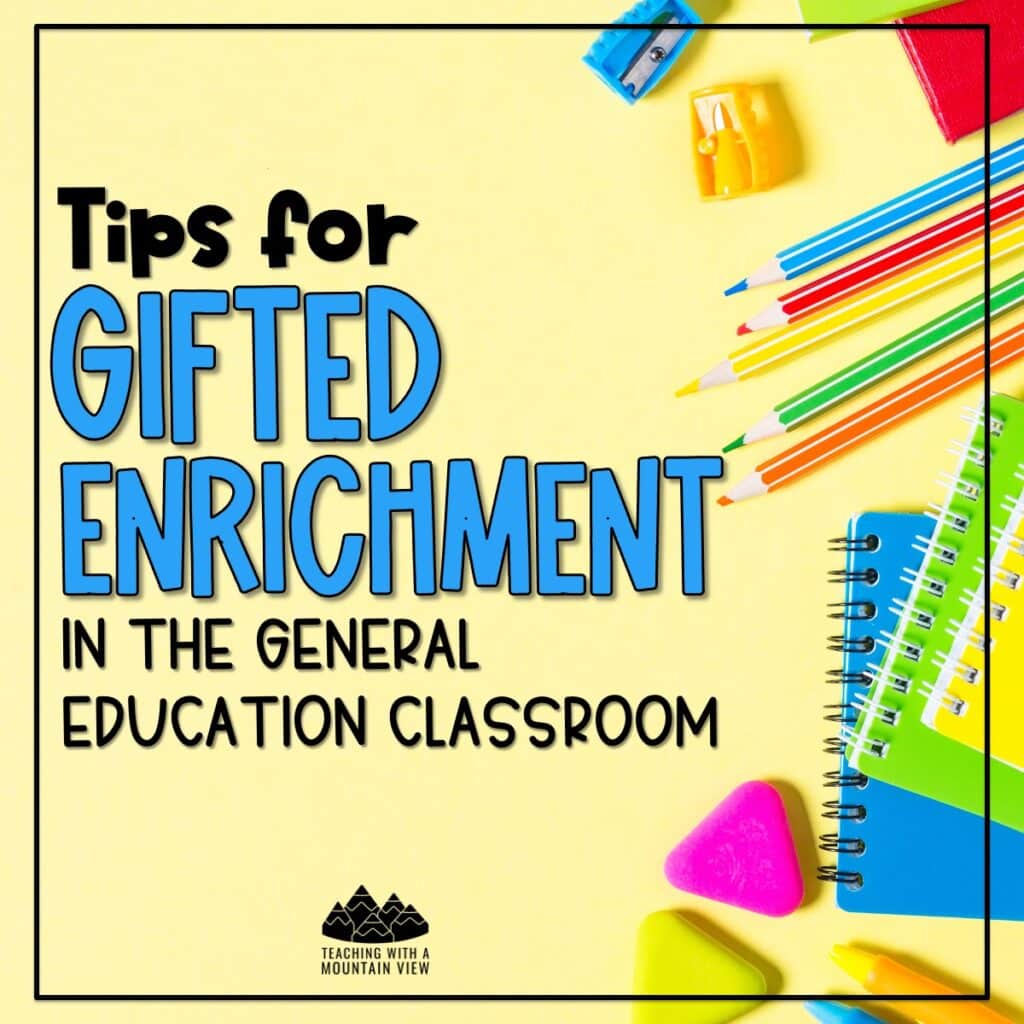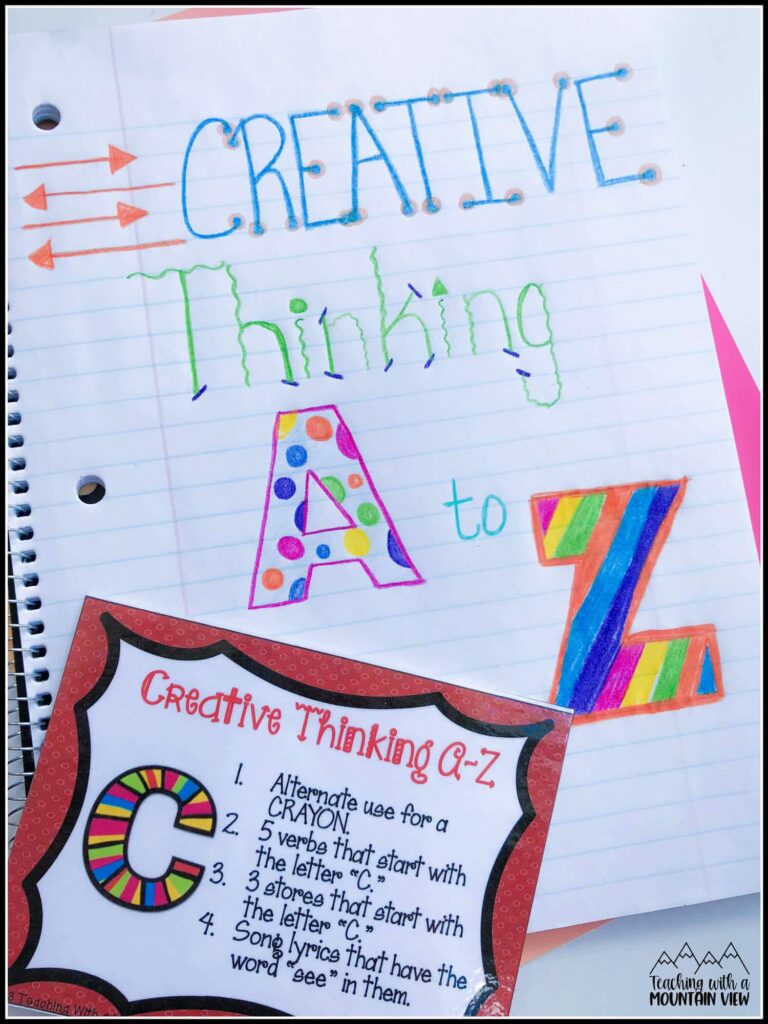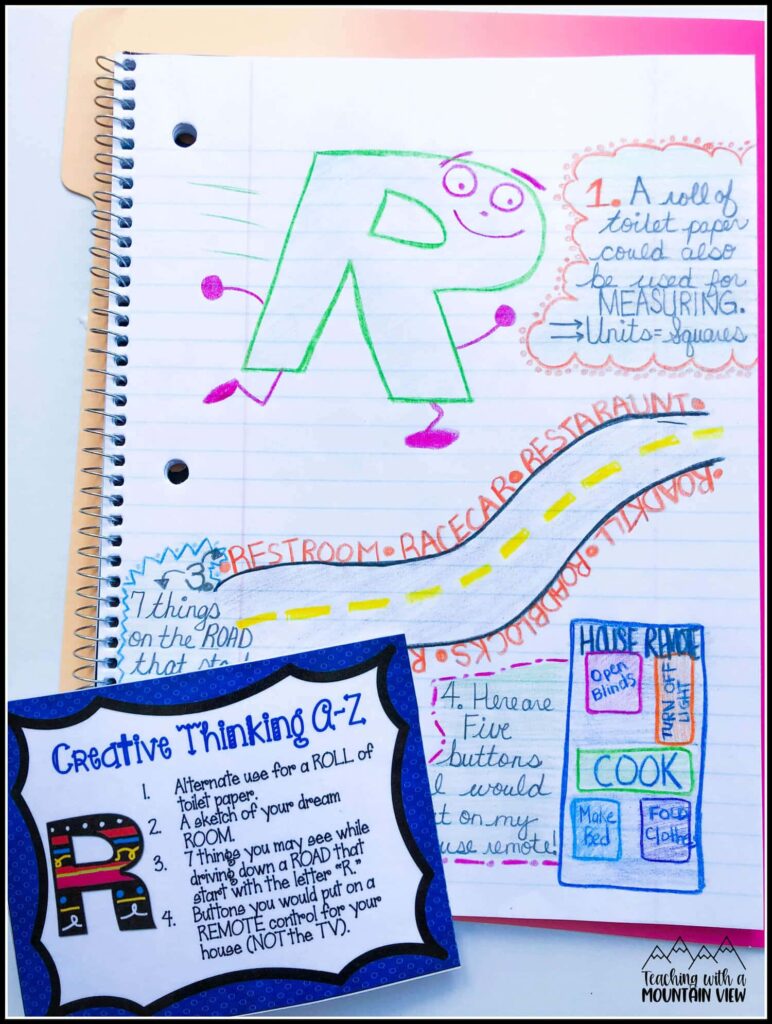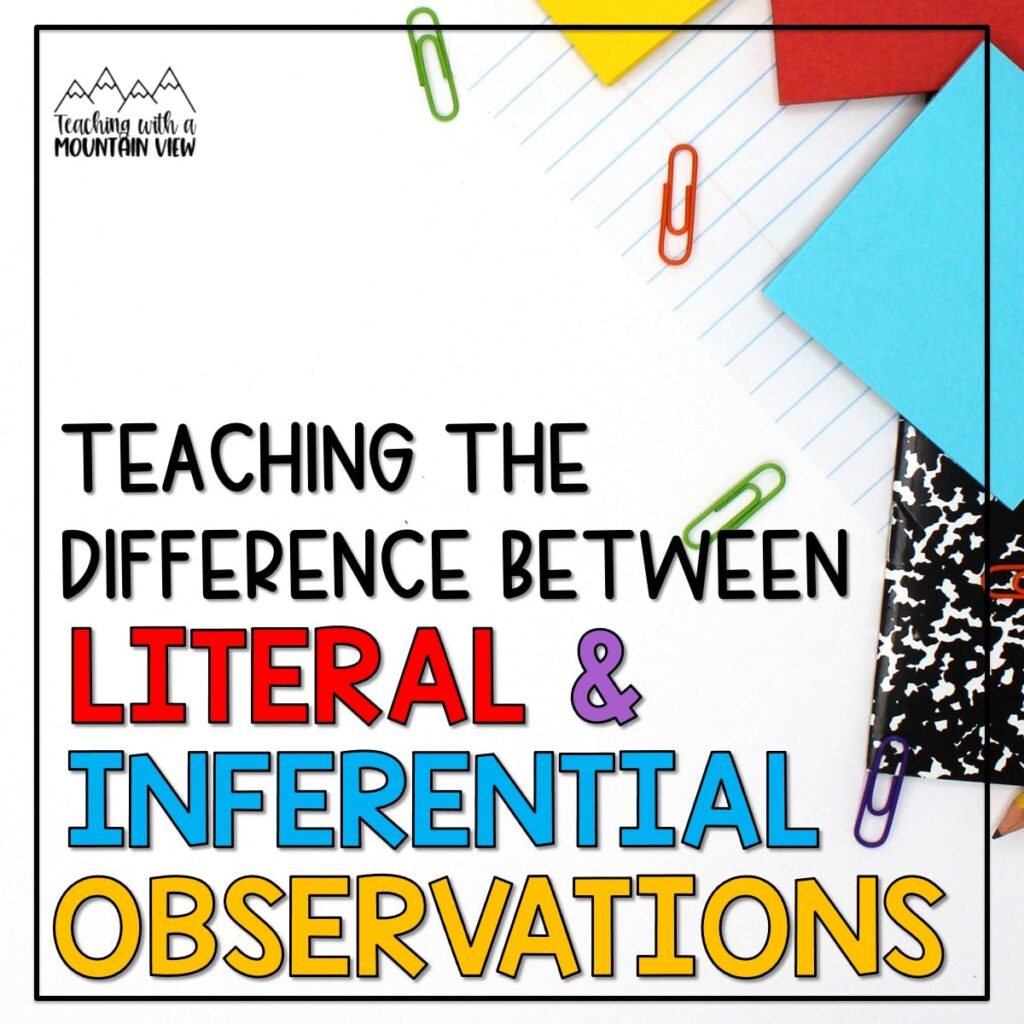Gifted and High-Achieving Students: How to Identify and Support These Students
By Mary Montero
Share This Post:
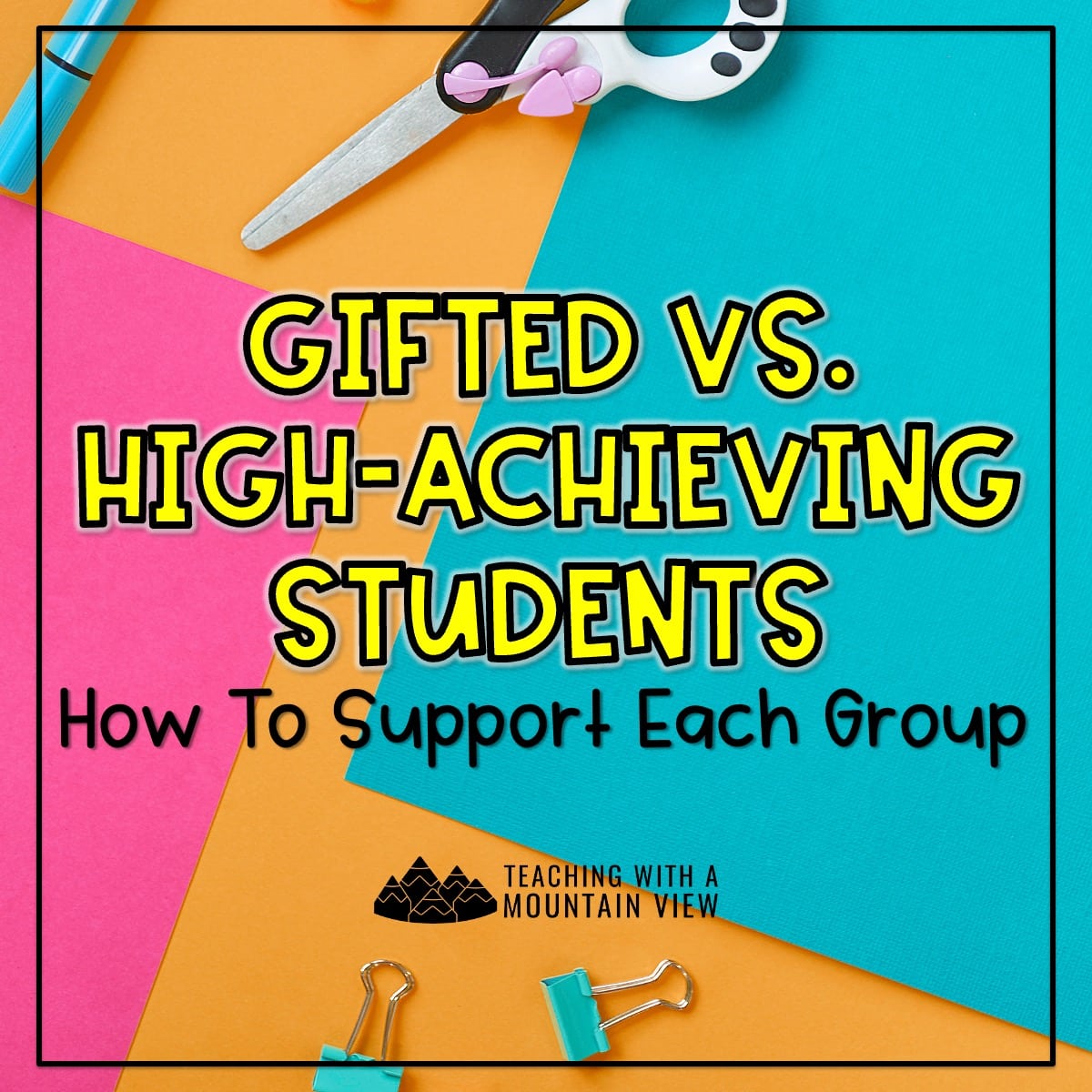
Identifying the differences between gifted and high-achieving students is a conundrum I encounter often in my role as the gifted facilitator at our school. In my current position, I work closely with our primary (grades K-3) gifted students through a pullout model, providing specialized lessons and enrichment. My colleague provides replacement curriculum for students in grades 4-6. In addition, we also provide our general education teachers with resources and support.
As I work with students, teachers, and families to identify and support gifted students, it has become easy to see how the unique needs of gifted students can be misunderstood. Additionally, the distinction between gifted and high-achieving students becomes much clearer, and understanding this distinction is essential for meeting everyone’s needs.
Let’s dive into some of the differences between gifted and high-achieving students and learn practical strategies that help each group thrive.
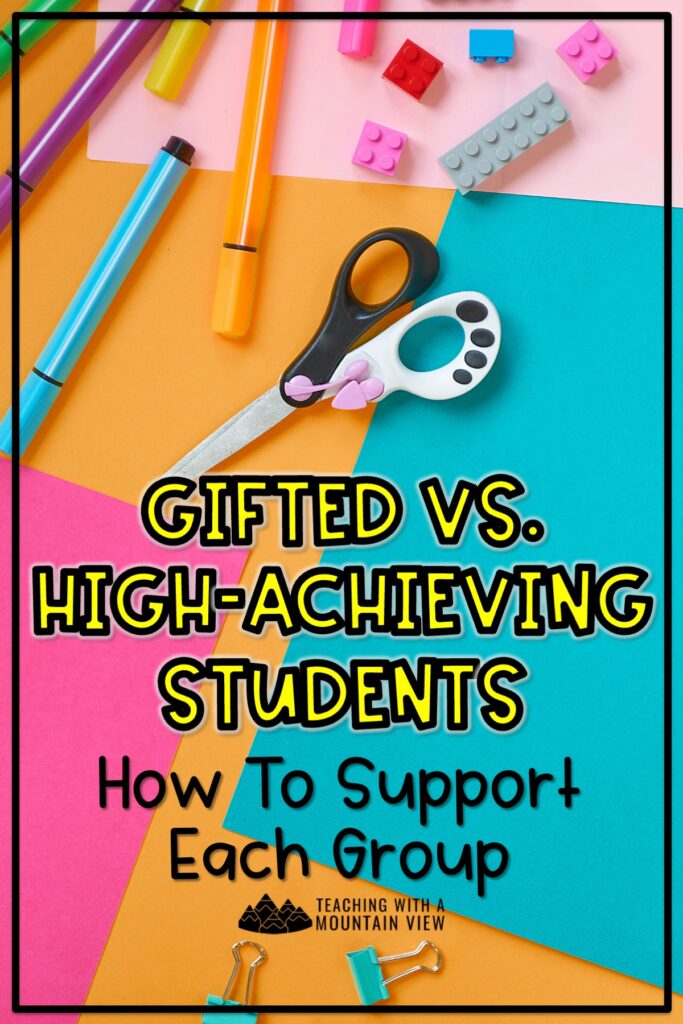
The Gifted Student Profile
Giftedness is often misunderstood and overlooked for the often easier-to-identify “high-achieving” profile instead. However, gifted students aren’t just quick learners. Instead, they often think in deeper, more complex, and/or creative ways. Their interests and achievements may not always align with traditional academic goals, but instead, they may shine through artistic creativity or leadership skills rather than exceptional academic abilities alone. Sometimes, their classroom performance is suboptimal.
For example, a gifted student might surprise you by asking a profound “why” question about a topic that goes far beyond the scope of the lesson. Perhaps a student instinctively puts together a plan to solve a real-world problem that others find overwhelming. However, the same student might also struggle with staying engaged in a classroom setting or appear disinterested if the material doesn’t challenge him. He may even underperform academically if his giftedness isn’t recognized and nurtured.
Recognizing gifted students requires us to look beyond surface-level achievements and instead see deeper potential in a student’s ideas, questions, and approach to learning. While academic achievement is still a key part of identifying a student who is academically gifted, standardized achievement tests shouldn’t be the end-all-be-all.
The High-Achieving Student Profile
High-achieving and academically or cognitively gifted students are often thought of interchangeably, but they represent distinct educational profiles. High-achieving students excel within structured environments by demonstrating diligence, strong work habits, and a commitment to academic success. They often perform well on assessments, complete assignments with precision, and exhibit a consistent drive to succeed. Their success is closely tied to their perseverance, early exposure to foundational skills, and ability to master and apply learned concepts. These students often thrive on organization, clear expectations, and opportunities to prove their capabilities through effort and determination.
Unlike gifted students (whose abilities are usually more innate and “out of the box”), high-achievers tend to thrive in traditional classroom environments. For example, a high-achieving student might be the one who meticulously studies for every spelling test, earning perfect scores each time, or who responds enthusiastically to a teacher’s extra-credit project by putting in the extra hours to ensure it’s polished and complete.
The bottom line: While high-achievers exhibit remarkable dedication, their abilities are tied to their work ethic, early exposure to concepts, and persistence rather than an innate ability to think abstractly or creatively at an advanced level.
Key Differences Between Gifted and High-Achieving Students
While gifted and high-achieving student are often lumped together, their differences become clear when you dig deeper into how they learn, think, and interact. Here’s a side-by-side look at distinctions between the two populations to make it easier to distinguish them.
| Gifted Students | High-Achieving Students |
| Innovators who think outside the box and generate unique ideas. | Performers who excel at meeting and exceeding expectations. |
| Prefer complex, open-ended problems; thrive on intellectual challenges. | Prefer clear instructions and structure; thrive in traditional learning environments. |
| May challenge concepts, question assumptions, and seek deeper meaning. | Focus on mastering and applying concepts within the given framework. |
| Tend to have intense curiosity, advanced reasoning skills, and creative thinking. | Display strong work habits, organization, and an ability to focus long-term on goals. |
| Can become bored or disengaged if the material feels repetitive or unchallenging. | Find satisfaction in completing assignments and receiving external rewards like grades or praise. |
| Emotional intensity can sometimes lead to frustration or perfectionism. | Strong motivation and persistence typically bring steady academic achievement. |
Can these traits be interchangeable? Absolutely! Can you have a high-achieving gifted student? Definitely! As is true about almost all students, not all have to fit in one “box.”
Understanding these differences can help teachers and parents tailor their support. Here’s how that might look in a science lesson about plants.
A gifted student might ask, “What would happen if we gave the plant soda instead of water? Would it grow faster, or would it die?” This student is curious about trying something different and thinking beyond the basic instructions.
A high-achieving student, on the other hand, would carefully follow the steps given by the teacher—adding just the right amount of water, making sure the seed is planted at the right depth, and keeping track of the progress to make sure they get the best results.
Both are learning, just in their own way—one by exploring new possibilities, the other by doing the project exactly as planned.
Emotional and Social Differences
These two populations often display different personalities and interpersonal styles, too.
Gifted students often experience the world with greater intensity. They may form strong opinions, feel emotions deeply, or express frustration more easily. Socially, they often gravitate toward adults or peers who share their intellectual interests. They sometimes feel “out of sync” with their age group. They get bored when asked to serve as a peer tutor.
High-achieving students tend to adapt well to social and academic norms. They often enjoy collaboration, thrive on positive reinforcement, and consistently seek opportunities to succeed or “blend in” with others. They often enjoy acting as a tutor or support to peers.
By recognizing these traits, we can better meet the needs of both groups of students, ensuring all students have the chance to succeed in the way they learn best.
Common Misconceptions About Gifted and High-Achieving Students
When it comes to understanding gifted and high-achieving students, several misconceptions can cloud judgment and impact the support these students receive. Here are three of the most common myths—and why it’s important to address them.
Myth 1: Gifted Students Always Excel Academically
Many people assume that gifted students will naturally earn top grades in every subject. However, giftedness doesn’t always align with traditional academic success. A gifted student may struggle to stay engaged in class, especially if the material isn’t challenging or relevant to their interests. Some might even reject routine tasks like homework, finding them too repetitive or uninspiring. Misinterpreting these behaviors might lead educators to overlook their potential or mistake disengagement for lack of ability.
Myth 2: High Achievers are Naturally Gifted
While high-achieving students show dedication and strong performance, their success often comes from early exposure, persistence, organization, and a consistent work ethic rather than inherent advanced intellectual ability. This misconception places unfair expectations on high-achievers, suggesting they should automatically excel in every area, even in tasks that require abstract or creative thinking beyond their natural skillset. Recognizing the effort behind their success ensures high-achieving students get the praise and guidance they deserve without being held to unrealistic standards.
Myth 3: These Students Don’t Need Extra Help or Differentiation
Gifted and high-achieving students are often seen as self-sufficient, leading to the belief that they don’t require additional support. This couldn’t be further from the truth. Both gifted and high-achieving students require differentiated, specialized curriculum adjustments to show adequate growth. Gifted students often benefit from enrichment opportunities or tailored instruction to keep them engaged, while high achievers might thrive with structured challenges and encouragement to stretch beyond their comfort zone. Without differentiation, both groups risk plateauing in their growth. A gifted student might grow frustrated and withdraw, and a high-achieving student might stick to “safe” tasks that guarantee success, missing opportunities for deeper learning.
I recently shared a post about the unexpected traits of gifted students that can help clear up other misconceptions to help you better identify these students.
How to Identify Gifted vs. High-Achieving Students
Understanding the differences between gifted and high-achieving students is the first step to identifying these students. Whether you’re a parent or teacher, you’ll need to closely observe their behaviors, performance, and learning styles to help make the distinction. While both groups of students typically stand out in the classroom, their unique strengths and needs can vary significantly.
Here’s how educators can start to identify both groups:
Behavior Patterns
- Gifted students often display intense curiosity and may show a preference for exploring open-ended questions or complex topics. They might get bored easily if the material feels too simple or repetitive.
- High-achieving students, on the other hand, are typically more task-focused and thrive within clear structures. They enjoy following directions and completing projects to a high standard.
Learning Approach
- Gifted students tend to think outside the box, offering creative solutions or challenging established norms. For example, they might question why a rule exists or propose an entirely new way to tackle a problem.
- High-achieving students are more likely to focus on mastering existing systems or demonstrating excellence in what is already outlined.
Classroom Performance
- Gifted students may have uneven academic performance. They could excel in one subject, like math, while struggling to stay interested in other areas, like routine grammar exercises.
- By contrast, high-achieving students usually maintain consistently high performance across subjects, as external rewards like grades and praise drive them.
Screening tools and formal assessments also have an essential role in identifying these groups of students.
While high achievement is often visible through grades and classroom performance, gifted traits may require more specialized evaluation to detect. When identifying students for giftedness, it’s important that a comprehensive body of evidence is acquired, including evidence that spans a significant period of time (one test result is often not enough to identify a student).
While district and state policies differ widely, screening for giftedness could involve measures like:
- Ability Testing: Standardized Cognitive Ability Tests, such as the CogAT, Naglieri, or KBIT to measure problem-solving and reasoning.
- Achievement Testing: Achievement Tests help distinguish whether a child’s success stems from effort or exceptional cognitive ability.
- Teacher and Parent Behavior Checklists, which highlight common gifted traits like curiosity, intensity, or sensitivity.
- A portfolio of demonstrated ability and achievement
Ability vs. Achievement Tests: What’s the Difference?
When identifying gifted and talented students, it’s important to understand the distinction between the ability and achievement tests that were mentioned above. When we are identifying students for giftedness, they must have qualifying ability and achievement scores.
- Ability tests measure a student’s potential for learning. These assessments focus on reasoning, problem-solving, and abstract thinking rather than knowledge acquired in school. Examples include IQ tests and cognitive assessments.
- Achievement tests, on the other hand, assess what a student has already learned. They evaluate mastery of specific skills and content areas, such as reading, math, and writing, often aligning with grade-level standards.
Strategies for Supporting Gifted Students
Gifted students thrive when they’re challenged and encouraged to think creatively. Without adequate support and challenges, they can become disconnected. Providing the right learning opportunities and emotional guidance can help these students excel. Here are some ways to do that.
Create Complexity and Challenge
Gifted students often crave depth and complexity. When the material is too easy or repetitive, they lose engagement. Offering enrichment activities, open-ended questions, and independent projects can help.
Project-based learning is one way to let gifted students explore their unique talents and interests. You can learn more about reading projects or math projects in these posts.
So much of what students are asked to do in math is all about solving the problem and finding the answer. That’s important, but students need to look at math in different ways to truly grasp a complete understanding of concepts. If we only ask students to solve problem after problem, we end up with a very surface-level understanding of a concept. When we give them error analysis tasks, students are challenged to figure out the error, explain the error in their own words, rework the problem, and attempt to advise the student who made the mistake. That’s a lot of critical thinking going into one problem and really increases their depth of understanding! This error analysis bundle is a great place to start.
These Monthly Critical Thinking Task Cards are one of my favorite activities for my gifted students. They make for really interesting discussions between students, and I love seeing the ideas come up with. I’ll have each student write down their answers, but they can discuss them together. They answer questions like, “Think of alternate uses for some of your school supplies” and “Imagine you are the inventor of the zipper. How would you advertise its uses to your readers?”
Verbal reasoning tasks are another way to help gifted students foster their verbal and critical thinking skills. You can also use these tasks as you familiarize students with the types of questions found on ability tests like CogAT.
These critical thinking daily brain busters are another way to promote critical thinking and help your students increase their logical reasoning in a way that’s so much fun!
Go Beyond Traditional Learning
Supporting gifted learners often requires us to get creative. We can do pre-assessments to determine if accelerations or compacting are appropriate. Then we can use advanced materials and/or flexible grouping to meet their needs.
High-Ceiling Math Tasks are especially beneficial for gifted students, offering them the chance to consistently grow their math understanding.
Prioritize Emotional Support
Our gifted learners often struggle with emotional challenges like perfectionism, low frustration tolerance, or even a sense of isolation due to their asynchronous development. Addressing these needs is crucial!
Morning meeting is a valuable SEL tool that works for all students.
These Daily Reflection Journals build essential writing skills while incorporating a growth mindset, self-reflection, and character development. It’s the ultimate way to incorporate SEL with writing standards.
This post on How to Combat Perfectionism in Gifted Students is another great read.
More Gifted Support Resources
Visit these posts for more practical tips, like using an enrichment binder, to help meet these needs!
Strategies for Supporting High-Achieving Students
High-achieving students bring dedication and focus to their learning. They often excel in structured classrooms where they can showcase their abilities. Here are some strategies to help these students thrive and grow.
Recognize and Encourage Achievements
High-achieving students are often externally motivated, so it’s crucial to acknowledge their efforts in a meaningful way. Personalize your praise and focus on specifics. For example, “I noticed how much thought you put into organizing this presentation—great work on your attention to detail!”
Also, encourage reflection to help students move toward internal reflection and motivation. Ask guiding questions like, “How do you think you’ve grown through this task?”
Offer Opportunities for Growth
Just like with gifted students, your high-achievers may be ready for acceleration, advanced coursework, and more variety. You can also pair high-achieving students with peers in team-based tasks.
Also, make sure you have a plan for productive and meaningful activities when your high achievers finish early. This is where I really like to use my Early Finisher bundle. It includes creative thinking task cards, journaling tasks, enrichment assignments, and more. It makes having productive, beneficial work a no-brainer!
Balance Structure with Flexibility
While high-achieving students thrive in structured environments, an overly rigid routine can lead to pressure or burnout. A balance between structure and flexibility helps them flourish at their own speed.
Allow downtime by building in breaks to encourage moments for unstructured creativity. High achievers often feel driven to “always be on” so we often need to give these students permission to relax a little!
Need More Support for Your Unique Learners?
Understanding the differences between giftedness and high achievement is key to meeting the unique needs of each group. While they may share certain traits and occasionally overlap, gifted students and high achievers thrive through distinctive approaches. Gifted students often need opportunities for creativity, complexity, and emotional support, whereas high achievers excel with structure, encouragement, and clearly defined goals. Both sets of students, however, deserve thoughtful, personalized support to unlock their full potential!
Want to chat about more strategies? Join our FREE Inspired in Upper Elementary Facebook group to connect with other dedicated teachers just like you.
Mary Montero
I’m so glad you are here. I’m a current gifted and talented teacher in a small town in Colorado, and I’ve been in education since 2009. My passion (other than my family and cookies) is for making teachers’ lives easier and classrooms more engaging.


